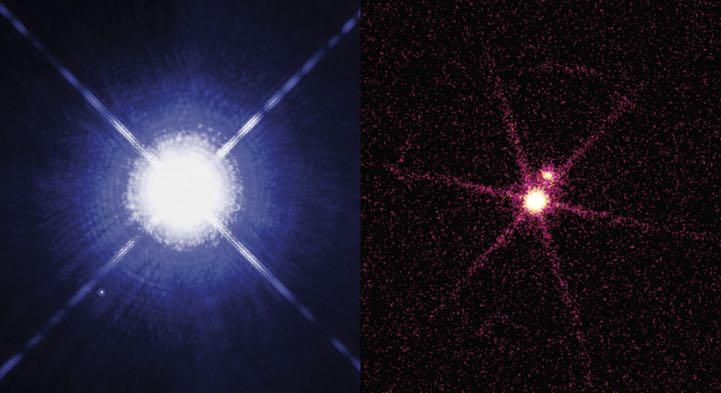
2 minute read
14 WSST Elections
WSST’s Digital Presence
www.wsst.org

www.twitter.com/wiscienceteach

www.facebook.com/wiscienceteach/
Taking the Dog Stars for a Springtime Walk: Sirius and Procyon
By David Prosper
people today: when rising or setting near the horizon, its brilliance mixes with our atmosphere’s turbulence, causing the star’s light to shimmer with wildly flickering color. This vivid, eerie sight was an indication to ancient peoples of changes in the seasons, and even triggers March skies feature many dazzling stars and UFO reports in the modern era! constellations, glimmering high in the night, but Both of these bright stars have unseen compantwo of the brightest stars are the focus of ions: tiny, dense white dwarf stars, the our attention this month: Sirius and remnants of supermassive companion Procyon, the dog stars! stars. Interestingly, both of these dim Sirius is the brightest star in the night- companions were inferred from careful time sky, in large part because it is one studies of their parent stars’ movements in of the closest stars to our solar system at the 1800s, before they were ever directly 8.6 light years away. Compared to our Sun, observed! They are a challenging observation, Sirius possesses twice the mass and is much even with a large telescope, since their parent younger. Sirius is estimated to be several hun- stars are so very bright that their light overdred million years old, just a fraction of the whelms the much dimmer light of their tiny Sun’s 4.6 billion years. Near Sirius - around the companions. The white dwarf stars, just like width of a hand with fingers splayed out, held their parent stars, have differences: Sirius B is away at arm’s length - you’ll find Procyon, the younger, brighter, and more energetic than 8th brightest star in the night sky. Procyon is Procyon B. Careful observations of these nearby another one of our Sun’s closest neighbors, systems over hundreds of years have helped though a little farther away than Sirius, 11.5 advance the fields of: astrometry, the precise light years away. While less massive than Sirius, measurement of stars; stellar evolution; and it is much older and unusually luminous for a astroseismology, the study of the internal strucstar of its type, leading astronomers to suspect ture of stars via their oscillations. Discover more that it may “soon” – at some point millions of about our stellar neighborhood at nasa.gov! years from now – swell into a giant star as it nears the end of its stellar life. Sirius and Procyon are nicknamed the “Dog Stars,” an apt name as they are the brightest stars in their respective constellations – Canis Major and Canis Minor – whose names translate to “Big Dog” and ”Little Dog.” Not everyone sees them as canine com- Sirius A and B imaged by two different space telescopes, revealing dramatically different views! Hubble’s image (left) shows Sirius A shining brightly panions. As two of the in visible light, with diminutive Sirius B a tiny dot. However, in Chandra’s brightest stars in the sky, image (right) tiny Sirius B is dramatically brighter in X-rays! The they feature prominently in “Universe in a Different Light” activity highlights more surprising views of the sky stories of cultures some familiar objects: http://bit.ly/different-light-nsn around the world. Sirius also NASA, ESA, H. Bond (STScI), and M. Barstow (University of Leicester) captures the imaginations of (left); NASA/SAO/CXC (right)



